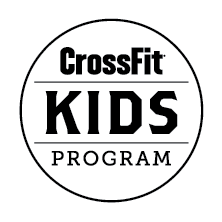
You’ve got an injury? That’s great news!

First things first. This is not medical advice, and I’m not a doctor. If you are experiencing pain while performing any movements at the gym, STOP! Assess the situation by trying the movement without any weight (ie Press with wood), and ask a Coach to watch you. If you can perform the movement perfectly, unweighted, without pain, then it’s most likely a case of improper technique and/or lack of mobilization. However if you can’t perform a movement, unweighted and with full range of motion, without pain, it’s time to see a medical professional.
Injuries, like illness, are a fact of life. No matter the cause, everyone will have to deal with it at some point. Many people will see this as the end to their fitness training, at least until they have fully recovered. But does it have to be that way? Does an injury have to mean replacing your time at the gym with time on the sofa, or even worse, replacing your clean food with a family sized bag of Doritos? Does it have to result in the loss of all your strength and conditioning gains that you’ve worked so hard for? The answer at CrossFit Schaffhausen is NO!!
As long as your Doc has cleared you for exercise, you should use this as an opportunity to focus on a particular aspect of your fitness. Talk with your Coach and come up with a plan to work around the affected area while it heals. A dedicated squat cycle can lead to significant gains in overall body strength while allowing a shoulder to recover. A knee or leg issue can be the ticket to more pull-ups, dips, or your first muscle-up. With an infinite number of exercises at our disposal, there is no reason why you can’t maintain, or even further improve your fitness while still allowing your body to heal.
Another benefit to training while recovering from an injury is the effect of cross-education. If you are injured, perform single-side training on the non-injured limb and you will minimize the effects of detraining. It’s well established that if you suffer an injury that causes you to be out of commission on one side, you can maintain strength and accelerate healing by training the uninjured limb. Studies testing the cross-education effect in the Journal of Exercise Science and Fitness showed that strength gains in the injured limb are typically in the range of 5 to 25 percent depending on if that limb is dominant or not. Strength gains average around 35 and 60 percent of those in the trained limb. These gains are certainly better than strength loss due to prolonged immobilization. Additionally, it appears that less range of motion will be lost in the injured limb due to the cross-education effect.
For more information on training while recovering from an injury, read WORKING WOUNDED by CrossFit founder Greg Glassman.




